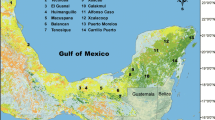Abstract.
Campanula spatulata is represented on Mt Olympos (2917 m) by two subspecies: the lowland spruneriana, from 400 to 1100 m, and the upland spatulata, from 1700 m to 2500 m. Spatulata populations significantly differed from those of spruneriana in the following features: (i) they consisted of shorter individuals with smaller flowers and lower flower production, (ii) they allocated more energy and resources below ground, (iii) they flowered much later in the year, had longer duration of flowering, and longer flower life span, (iv) they produced smaller fruits with fewer but heavier seeds, (v) they received lower numbers of insect visits for fewer hours per day, and (iv) they were pollinated by smaller insects. Between and within subspecies comparisons showed that in most cases the patterns of character change were neither gradual nor monotonous all along the elevation gradient. The differences in phenological characters are in agreement with patterns associated so far with elevation change. The taxonomic and biometric differences of the insect pollinators as well as the temporal separation of the flowering periods provide substantial evidence of reproductive isolation of the two C. spatulata subspecies on Mt Olympos.
Similar content being viewed by others
Author information
Authors and Affiliations
Additional information
Received July 25, 2001 Accepted December 6, 2001
Rights and permissions
About this article
Cite this article
Blionis, G., Vokou, D. Structural and functional divergence of Campanula spatulata subspecies on Mt Olympos (Greece). Plant Syst. Evol. 232, 89–105 (2002). https://doi.org/10.1007/s006060200029
Issue Date:
DOI: https://doi.org/10.1007/s006060200029




